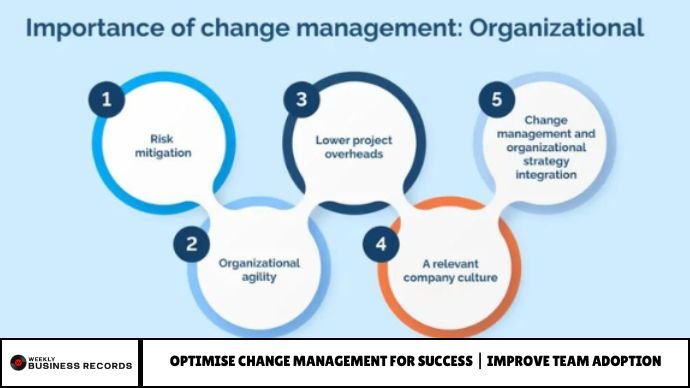How to Optimise Your Change Management Process for Success Optimising your change management process is essential for reducing resistance, boosting employee engagement, and ensuring successful transitions. This guide provides actionable strategies, real-world examples, and the latest data to help organisations implement change effectively while keeping teams aligned and productive.
Despite mounting evidence showing that up to 70% of change initiatives fall short, many organisations still prioritise systems, structures, and tools over what truly determines success: their people.
In an era defined by constant disruption—whether it’s digital transformation, AI integration, organisational restructuring, or supply chain volatility—leaders are under pressure to adapt quickly. But this relentless pace has created a new challenge: change fatigue. Employees are often overwhelmed, burned out, and disengaged, leading to resistance and stalled progress.
Yet amid the chaos lies a powerful opportunity.
The organisations that prioritise people and foster adaptability won’t just survive—they’ll lead, grow, and innovate.
Introduction: Why Most Change Efforts Fail
“70% of change initiatives fail due to employee resistance and lack of management support.” — McKinsey & Company
Change is constant—but success isn’t. Many organisations initiate change without a clear strategy, leading to confusion, resistance, and failure. If you’ve ever launched a new system or restructured a team only to face pushback and plummeting morale, you’re not alone.
In this guide, we’ll walk you through how to optimise your change management process, starting with fundamentals and building up to expert-level strategies. You’ll learn to communicate effectively, engage stakeholders, monitor progress, and ensure sustainable success.
1. Understand the Fundamentals of Change Management
Before you optimise, you must understand the core principles.
Key components include:
- Clear Vision: What change is happening and why?
- Leadership Alignment: Leaders must champion the change.
- Stakeholder Engagement: Everyone affected should feel involved.
- Training & Support: Equip employees to succeed post-change.
2. Identify and Remove Common Barriers
Barriers often stem from fear or miscommunication.
Top roadblocks to successful change:
- Lack of communication
- Employee resistance
- Insufficient leadership
- Inadequate training
3. Develop a Clear, Scalable Communication Plan
Communication must be consistent, clear, and multi-channel.
Best practices:
- Use multiple formats (email, town halls, intranet posts)
- Share timelines and milestones
- Encourage two-way feedback
- Personalise messages by audience segment
4. Involve Employees in the Process
People support what they help create. Early involvement builds buy-in.
Ways to engage staff:
- Include them in pilot programs
- Ask for feedback during planning stages
- Recognise employee contributions during rollout
5. Provide Ongoing Support and Training
Many change processes fail after rollout due to lack of reinforcement.
To maintain momentum:
- Offer regular training sessions
- Set up help desks or digital support hubs
- Provide refresher materials and follow-up check-ins
6. Monitor, Measure, and Iterate
Change isn’t a one-time event—it’s a cycle.
Track success using:
- Key Performance Indicators (KPIs)
- Employee feedback tools
- Change readiness assessments
7. Scale What Works Across the Organisation
Once a change strategy proves effective, document it.
Create a change playbook that includes:
- Lessons learned
- Communication templates
- Leadership training modules
- Metrics dashboards
This ensures you can replicate success without starting from scratch every time.
Frequently Asked Questions (FAQs)
1. What is the goal of change management?
To help organisations adapt effectively by preparing, supporting, and guiding employees through change.
2. Why do most change initiatives fail?
Due to poor communication, lack of leadership support, and employee resistance.
3. How can I reduce resistance to change?
Engage employees early, communicate clearly, and provide adequate training and support.
4. What tools help manage organisational change?
Tools like Prosci ADKAR, ChangeGear, and Microsoft Teams can support planning and communication.
5. How long should change management last?
It depends on the scale, but ongoing support should continue for several months after rollout.
6. What’s the first step in optimising change management?
Start with a stakeholder analysis to understand who’s affected and how best to communicate with them.
Conclusion
Optimising your change management process isn’t just about handling today’s shift—it’s about preparing your organisation for tomorrow’s challenges. When you build a culture that embraces change, your business becomes more agile, resilient, and competitive.


